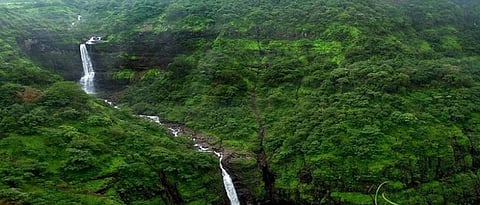

Pune: Bhimashankar Sanctuary, which includes 42 villages in Pune, Raigad and Thane districts, has been declared as an Eco-Sensitive Zone by the Ministry of Environment, Forests and Climate Change of the Union Government.
A draft notification was issued on July 25, 2019 regarding the declaration of Eco-Sensitive Zone of Bhimashankar Sanctuary. The notification sought objections and suggestions from villages being included in the eco-sensitive zone. The Gram Panchayats of these villages had objected to this draft notification and opposed the decision to declare this zone as an eco-sensitive zone. Despite the opposition of locals, the Union Ministry of Environment, Forests and Climate Change has gone ahead and declared this zone as eco-sensitive on 5 August 2020.
Due to the environmentally sensitive area, these villages will not be able to start chemical fertilizer factories, large power generation projects, lumber mills, stone quarries, large housing projects, recreational gardens and reserved space for commercial, residential or industrial activities. Also, permission is required to build a new hotel or resort. Also, plastic waste, solid waste, biomedical waste, e-waste will have to be managed. The law will be strictly followed to prevent and control vehicle pollution. No construction will be allowed on it to protect the mountain slopes.
Bhimashankar Sanctuary came into existence on 16th September 1985 covering an area of 130.78 sq km in Pune, Thane and Raigad districts. The state animal of Maharashtra, Shekru, is found in this sanctuary. There are also 22 species of mammals such as leopard, sambar, bhekar, Hanuman monkey, wild cat, scaly cat, mongoose, peacock, owl, prey, green pigeon and about 25 species of reptiles and amphibians.
The sanctuary is located in the Western Ghats. Therefore, the K. Kasturirangan committee has recommended that the sanctuary needs to be protected and activities going on near the sanctuary need to be monitored. This sanctuary helps to stop rain and increase groundwater level and stops soil erosion. The Bhima, Ghod and Bubra rivers also originate from this sanctuary. There is Chaskaman dam on Bhima river and Dimbhe dam on Ghod river. The water from these rivers flow towards the Ujani dam. Therefore, all aspects need to be considered while protecting the biodiversity around the sanctuary. Bhimashankar Wildlife Sanctuary has been declared an Eco-Sensitive Zone from 0.05 to 10 km, while excluding the sanctuary, it covers an area of 101.62 sq km.
MONITORING COMMITTEE
A 9-member monitoring committee has been formed to consider the environmental issues in the area and its chairman will be the Pune District Collector and Member Secretary will be Deputy Conservator of Forests, Junnar. Also, the committee will consist of District Collector of Thane and Raigad District, Deputy Conservator of Wildlife Pune, Deputy Conservator of Raigad and Thane, Pune Raigad Town Planning Officer of Thane District, state environment department official and subject matter experts and representatives of social organizations.
MASTER PLAN IN THE MAKING
Under the Monitoring Committee, various departments of the state government will prepare a master plan. This includes water conservation, watershed development and groundwater management. Also, the plan will demarcate the boundaries of places of worship, settlements, agricultural areas, fertile areas, horticulture areas, orchards, lakes, industries in the eco-sensitive zone. In addition, widening and strengthening of existing roads in the eco-sensitive zone, construction of new roads, construction and renovation of infrastructure and civic amenities, non-polluting small scale industries, eco-tourism which provides employment to the locals, home cottages and other businesses can be done with prior permission.
THESE VILLAGES ARE INCLUDED
• Fagulgavhan, Amboli, Bhivade Budruk, Bhivade Khurd, Hatvij from Junnar taluka, Don, Aghane, Naved, Tirpad, Nanwade, Mahalunge, Ambegaon, Pimpri, Terungan in Ambegaon taluka, Bhivegaon, Bhomale, Kharpud in Khed taluka of Pune district
• Jabrang, Rajapur, Tambhare, Singdhol, Dhotre, Shilar, Pathraj, Khandas, Ambherpada, Nandgaon from Raigad district
• Baliware, Dongarnavhe, Jamburde, Khanivare, Sakurali, Narivali, Uchale, Dehri, Khopwali, Milhe, Dudhanoli, Umroli Khurd, Durgapur, Madh, Rampur, Chalu from Thane district.
